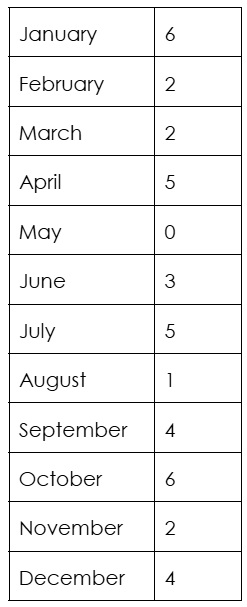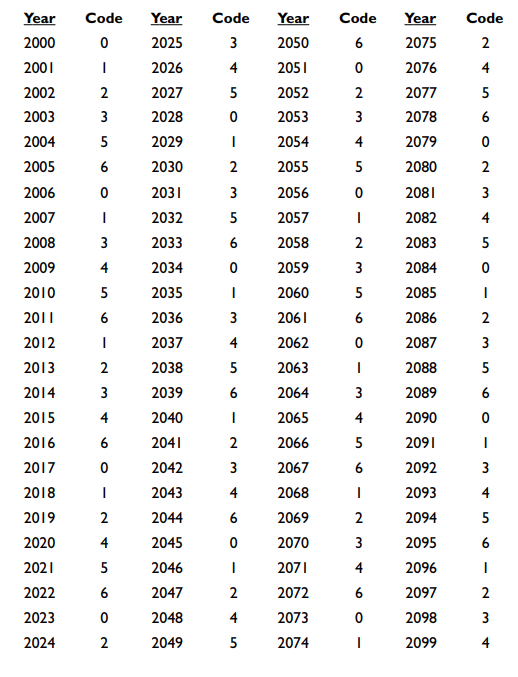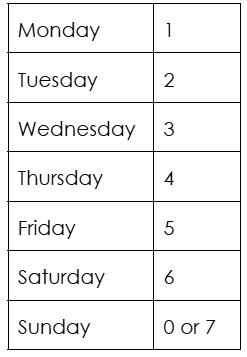Day of the Week
Given any date, you can figure out the day of the week on that specific day with the following steps.
General Solution
Follow these instructions:
- Remember or note down these two codes:


Beware! (Left Chart) For leap years, the code for January will become 5 and the one for February will be 1. -
However, the good news is that we do not have to remember all these codes. The trick is to know what years have 0 codes, for example, 2006. Then, for every year after 2006, your code increases by 1 - 2007 has a 0 + 1 = 1 code. However, if you come across a leap year, such as 2008, you have to add two. Therefore, 2008 has a 1 + 2 = 3 code (2007 code + 2). This cycle continues on, until you reach 6 or 5. If the next year is not a leap year, a six code from the previous year would become a 0 code, while a 5 code would become a 0 code if it was a leap year. Essentially, 7 codes are instead 0 codes.
Trick
Years from 2000 to 2009 (Let the year be 2000 + x):
Year code = x/4 (discard the remainder) + x
Finally, subtract the largest multiple of 7 from your current year code.
For the following centuries, imagine the first two digits of the year were replaced with 20.
1900 - 1999:
Complete the calculation as if it was a date from 2000-2099, but shift the date forward by one day or add 1 to your answer.
1800 - 1899:
Complete the calculation as if it was a date from 2000-2099, but shift the date forward by three days or add 3 to your answer.
2100 - 2199:
Complete the calculation as if it was a date from 2000-2099, but shift the date forward by 5 days or add 5 to your answer. On the other hand, you can instead subtract 2 or shift backwards by 2 days.
1700 - 1799:
For these dates, you do the same as for 2100-2199; you add 5. However, since September 14, 1752 marks the change from the Julian calendar to the Gregorian calendar, any dates before September 14 will not satisfy the formula. Specifically, Wednesday, September 2, 1752 was followed by Thursday, September 4, 1752, so there was a 12 day time skip between these two dates. Essentially, do not attempt use of this formula for any date before September 14, 1752.
Example
For the year 2065, we have x as 65. x/4 = 65/4 = 16 R 1 (We forget the 1, or the remainder)
Year code = 16 + 65 = 81
Largest multiple: 77
Therefore, the year code for 2065 is 81-77 = 4 - Add the date (1-31), month codes, and year codes together, then subtract the largest multiple of 7 from this
sum.
Eg. March 19, 2061
19 + 2 + 6 = 27
27-21 = 6, or Saturday.
January 1
- Remember this code:

- Take the last two digits of the year and multiply it by 25%, or ¼. Next, discard the change, and add the
original amount.
Example
In year 2067, we take these steps:
67 * 25% = 67 * ¼ = 16.75
Discarding the change, we have 16. Adding the original amount, 67, we have:
67+16 = 83
We subtract the largest multiple of 7, 77 from 83 to calculate:
83-77 = 6, or Saturday!
